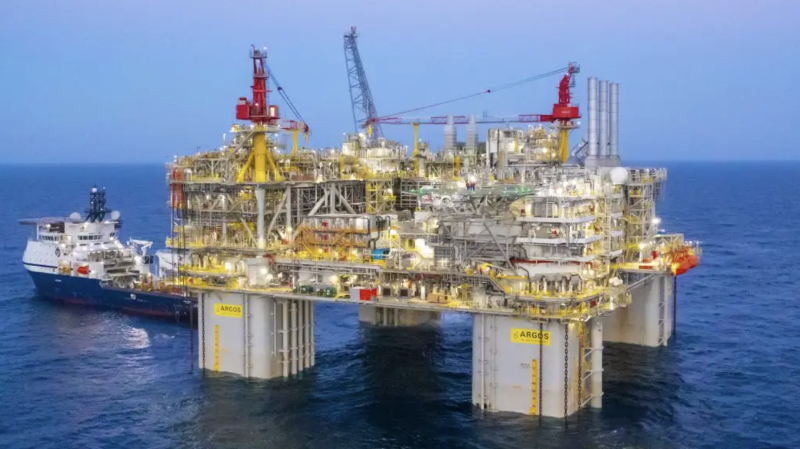BP announced its largest discovery in a quarter century and first oil at one of its deepwater projects on 4 August.
BP’s deepwater Bumerangue prospect offshore Brazil found an estimated 500-m gross hydrocarbon column, while in the Gulf of America, which was recently renamed from the Gulf of Mexico, BP brought its deepwater Argos Southwest Extension tieback project online, which is the supermajor’s s fifth major project startup this year.
The Valaris Renaissance drilled the 1-BP-13-SPS exploration well on the Bumerangue block in the Santos Basin to 5855-m total depth in a water depth of 2372 m. The well intersected the reservoir about 500 m below the crest of the structure before striking the hydrocarbon column in a high-quality pre-salt carbonate reservoir covering an area exceeding 300 km2.
Gordon Birrell, BP’s executive vice president for production and operations, said in a news release that Bumerangue is BP’s largest discovery in 25 years.
“Brazil is an important country for BP, and our ambition is to explore the potential of establishing a material and advantaged production hub in the country,” he said.
Results from on-site analysis indicated elevated levels of carbon dioxide. BP said it will carry out laboratory analysis to further characterize the reservoir and fluids discovered to gain insight into the block’s potential. BP plans further appraisal activities, subject to regulatory approval.
BP operates the block with 100% interest, with Pré-Sal Petróleo S.A. as the production-sharing contract manager. BP secured the block in December 2022.
So far this year, BP has reported nine other discoveries, including Beryl and Frangipani in Trinidad, Fayoum 5 and El King in Egypt, Far South in the Gulf of America, Hasheem in Libya, and Alto de Cabo Frio Central in Brazil, and discoveries in Namibia and Angola through Azule Energy, its 50/50 joint venture with Eni.
Argos Tieback Goes Online
BP’s Argos Southwest Extension project in 4,500-ft water depth has begun sending oil to its existing Argos platform in Green Canyon Block 780 in the Gulf. In all, the three-well subsea tieback is expected to add 20,000 BOPD of gross peak annualized average production to the production unit, which has 140,000 BOPD capacity and has been online since 2023. The tieback project reached first oil 25 months after the appraisal well’s May 2023 completion and 7 months ahead of schedule. BP said it was able to bring the project online ahead of schedule through concurrent workstreams, optimizing project management, and engaging in early procurement.

The Argos Southwest Extension project includes three wells and a new drill center about 5 miles southwest of Argos. The subsea tieback extends the footprint of the Mad Dog field that was discovered in 1998 and online since 2005. The Mad Dog field is estimated to have resources of more than 5 billion BOE.
BP has announced plans to bring online 10 major projects by 2027, of which Argos Southwest Extension is one. It is also the first of three major expansions and newbuild projects in the deepwater Gulf that BP said will enable it to boost its production capacity to around 400,000 BOED from the US offshore region by the end of this decade. The other two are the Atlantis Drill Center 1 Expansion, which will add around 15,000 BOED of gross peak production and is expected to start up in 2026, and the Atlantis Major Facility Expansion, which will further increase production from the Atlantis field using existing infrastructure and is expected to start up in 2027.
On a later horizon, BP aims to bring its 20,000-psi Kaskida production platform in the Gulf online in 2029. It will have a production capacity of 80,000 BOPD. BP also said it is working toward reaching final investment decision on its Tiber-Guadalupe project later this year.
BP operates Argos with 60.5% interest on behalf of partners Woodside Energy with 23.9% interest and Chevron affiliate Union Oil Company of California with 15.6% interest.


